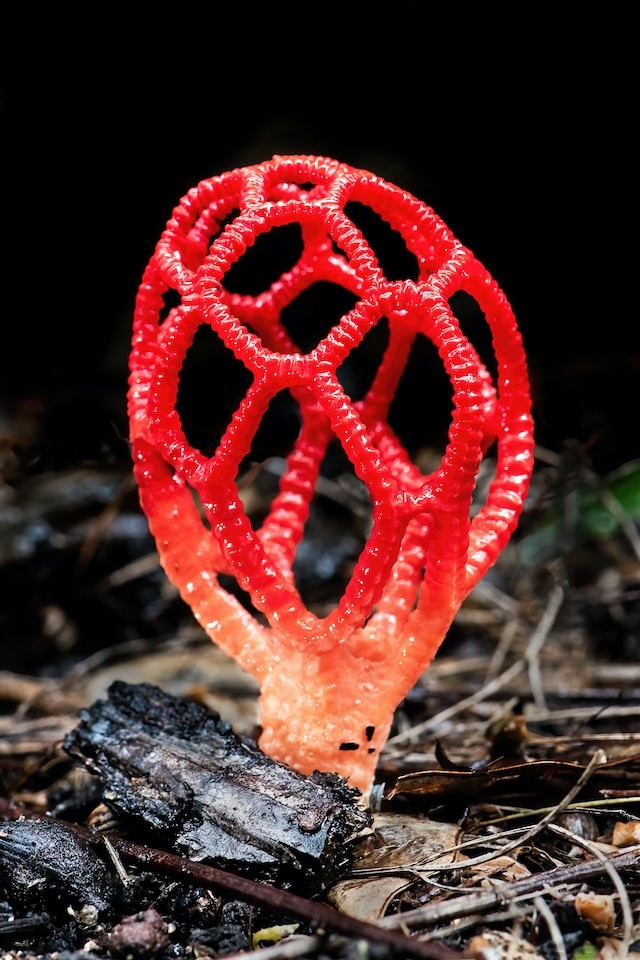Clathrus ruber stands out as a particularly strange mushroom in a world of strange mushrooms: a geometric pop of orange-red appearing in gardens and parks after the rains, having a look like an errant pickleball than just a traditional toadstool.
Fungus that attracts flies

C. ruber is a member of the Phallales order, also renowned as stinkhorns. is also known as the basket stinkhorn, latticed stinkhorn, or red cage fungus, as per Bay Nature.
They start their life above ground as just dirty white egg that pokes its head out of the soil and detritus.
The egg may start to show the faint edges of a geometric shape going to grow within it over time.
When the mushroom inside matures enough, it pops upward from the egg, becoming a fully formed, bizarre structure in a few minutes.
The mature cage stinkhorn resembles a demonic bucky ball which you could use as a loofah.
Several mushrooms dispersed by having released spores into air, which the winds carry around, but stinkhorns hide their spores within gleba, a stinky goo.
The inside of C. ruber is coated with gleba. Flies flock towards the foul stench and pick up the gleba. They then spread the goo and the spores it contains wherever they go.
The majestic C. ruber appeared about 24 hours after the dramatic appearance. It deflates like a leaking bouncy castle and shrivels away into debris from which arose.
Since flies enjoy the odor of the gleba, eating it, rolling around in it, and having the fun of their short lives, humans do not.
The stinkhorn's odor has been described as fetid, extremely foetid, foul-smelling, stinky, stench of death, cadaverous, like a dead rat, and rotting flesh, which paints a fairly clear olfactory picture.
Clathrus ruber's otherworldly architecture and netherworldly odor evoke witches and aliens, but it prefers an earthlier environment mulch and nutrient-rich soil.
It appears to be most common in gardens that use composted fertilizer or tree bark as mulch.
Fungi produce good-quality soil
Fungi are a diverse group of organisms that include a wide range of life forms, from single-celled creatures to extremely complex multicellular organisms, as per Decade on Restoration.
They can be microscopic or large, with underground processes that stretch for miles or even hectares.
Fungi are an essential component of soil biodiversity, and this diverse collection of organisms can assist in addressing global issues such as climate change and hunger.
Fungi are inextricably linked to vegetation, as well as carbon and nutrient cycling.
As a result, among other ecosystem functions, they are important drivers of soil health and carbon sequestration.
They also have the capacity to convert nutrients so that they are available to plants.
Some fungi are decomposers, which means they decompose plant and animal waste, cycling nutrients and continuing to increase their availability in the soil.
Fungi are major contributors to soil carbon stock. They play an important role in the carbon cycle via the soil food web.
Decomposers cycle carbon from litter and dead plant material, whereas other living species in mutual symbiotic relationships with plant roots provide further stable carbon stocks.
© 2025 NatureWorldNews.com All rights reserved. Do not reproduce without permission.

